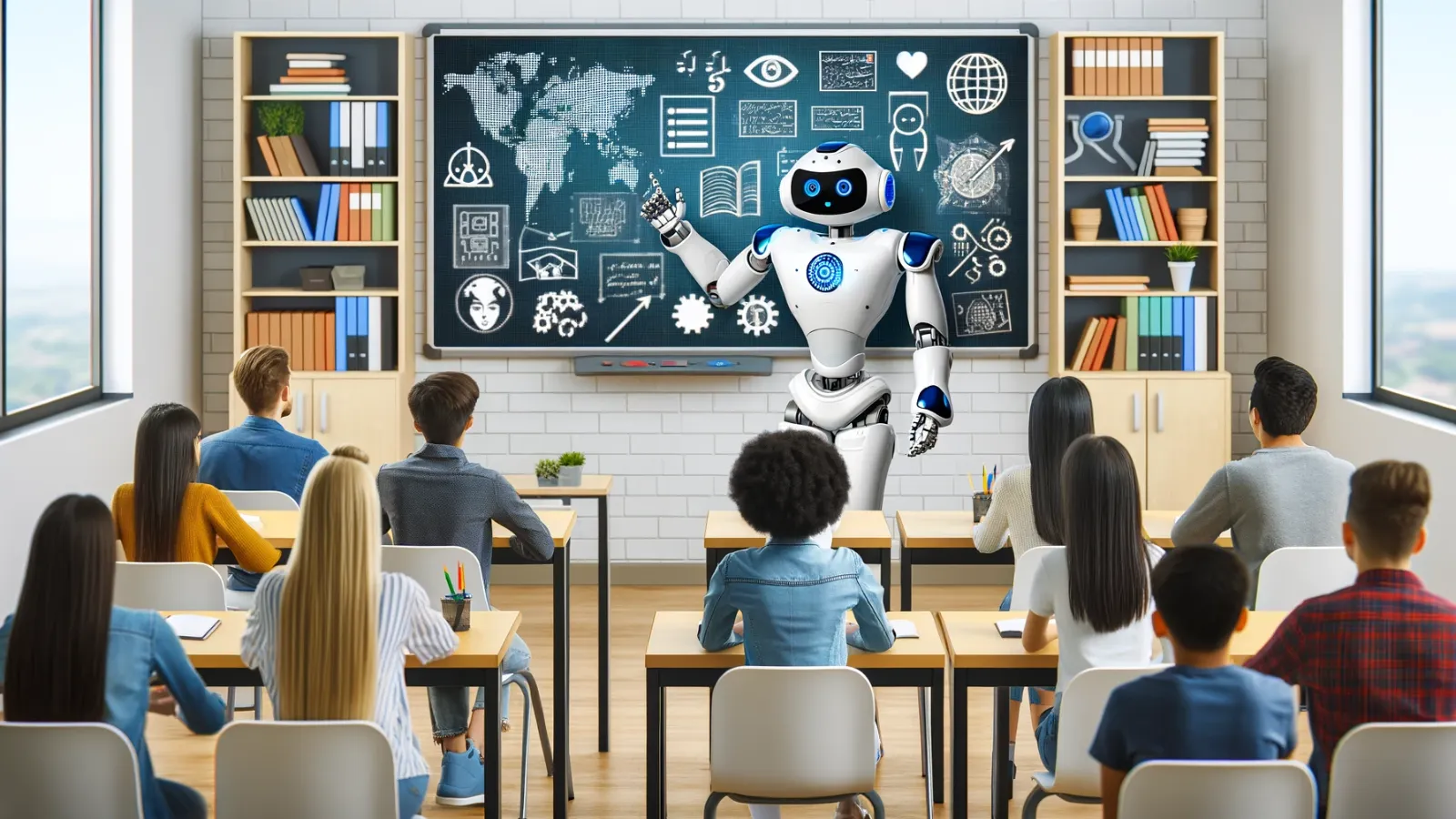The ascent of artificial intelligence in our daily lives is undeniable, especially with the prominence of AI models like OpenAI’s ChatGPT. One area that has seen the most significant adoption—and controversy—is the classroom.
Students and teachers alike are looking for ways to leverage the technology, whether to teach, learn, cheat, or detect cheating.
This article will look at AI tools available to teachers that may help design assignments and activities to encourage learning, emphasizing free or low-cost tools given the average educator’s budget.
AI models like those listed in this article use generative artificial intelligence or models that use prompts to generate text, images, music, and videos.
Chatbots: ChatGPT, Google Bard, Claude AI
Chatbots have quickly become a part of our daily lives, and learning how to use them can make everyday tasks like lesson planning much more manageable. Using generative AI, teachers can create lesson plans on the fly by entering prompts based on what they want to teach. These plans can be tailored by telling the AI model the level of learner the lesson is meant for.
While Google Bard has not yet rolled out to all Google accounts, ChatGPT and Claude AI are freely available and come with added subscription tiers that include more features like, in the case of ChatGPT Plus, access to the faster and more robust GPT-4 and plugins. For teachers looking to get the most out of the free ChatGPT, Microsoft Bing includes ChatGPT in the browser, thanks to billions in investments in OpenAI. Claude AI Pro and ChatGPT Plus come with a $20/month price tag.
Education Copilot
Education Copilot is a handy website for generating lesson plans using generative AI. Education Copilot lets teachers create reports, handouts, PowerPoint presentations, quizzes, and lesson plans. Education Copilot’s subscription tier starts at $9 for a monthly plan and $5 for an annual subscription. Both subscription versions support over ten languages and upgraded storage and features.
Khan Academy
Khan Academy has been in the digital education space for years. Khan Academy’s age level ranges from K-8 to College and beyond. Thanks to the launch of ChatGPT and the swift adoption of AI, Khan Academy has added an education section centered on AI, along with the AI for Education course. Earlier this year, Khan Labs, the company behind Khan Academy, launched an AI platform called Khanmigo, where, starting at $9 a month, teachers and students can chat with historical like U.S. President Abraham Lincoln and Warlord Genghis Khan in the form of AI chatbots using OpenAI’s GPT-4. Khanmigo includes lesson-planning aids, student performance tools, and the ability to switch between student and teacher modes.
Grammarly
While Grammarly’s platform has helped many writers with grammar and punctuation, teachers will find its suite of AI tools helpful. One of these tools is the ability to upload a document, including OpenDocument Text, Google Docs, Rich text format, and Plain text format for plagiarism. Grammarly claims to check submissions against billions of pages, giving the percentage of plagiarism and links to what it says is being plagiarized.
In April, Grammarly launched Grammarly. Integrated into the Grammarly dashboard, Grammarly GO is an AI chatbot that can generate text based on user prompts, including setting the level of formality, tone, and dialect. A subscription to Grammarly Premium starts at $30 for a monthly plan and $12 monthly for an annual subscription. While pricey, Grammarly can make teachers better equipped to flush out plagiarism.
Where do we go from here?
While business leaders foresee a future with AI fully integrated into the workforce, experts are sounding the alarm about too much exposure to AI, especially for children.
"Children can form deep relationships with inanimate objects, like a teddy bear—now you have this tool that gives you exactly what you need—because AI is going to be amazing at figuring out what you want to hear and giving that to you," psychologist and executive coach Banu Kellner told Decrypt in an interview.
Despite the continuing problem of AI hallucinations, biases, and generating harmful body images, AI tools have progressed enough to assist in tutoring, curriculum design, and administration. As AI advances into the future, its impact on the classroom will only become stronger.
Edited by Ryan Ozawa.


